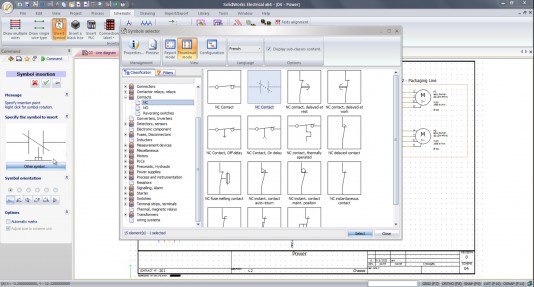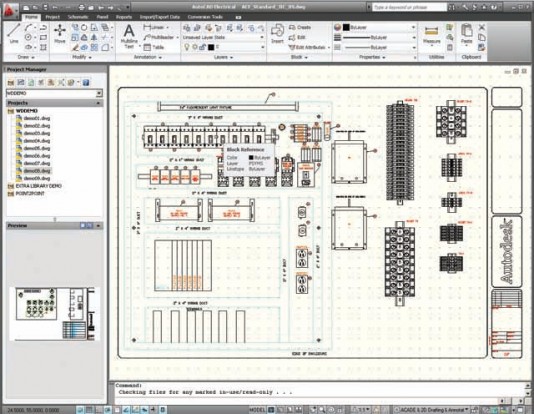Steve Wolfe explores the history and capabilities of the market-leading AutoCAD Electrical with a new competitor from SolidWorks.
By L. Stephen Wolfe, P.E.
Unless your company fabricates sheet metal or building materials or makes hand-held devices so small there is no room for cables, then your products probably including electrical wiring. That’s a huge market for CAD software that has gotten slight attention from most mainstream CAD vendors.
Nine years ago, Autodesk introduced AutoCAD Electrical based on software from VIA Development, a small company it purchased for an undisclosed sum. Unlike plain AutoCAD, which doesn’t know an electric circuit from any other line on a drawing, AutoCAD Electrical maintains a relational database of point-to-point connections, component identification tags (often called reference designators), and component schematic images that appear on AutoCAD drawings. This information helps designers with AutoCAD Electrical draft electrical schematics faster by automatically breaking lines to insert components and generating parts lists. AutoCAD Electrical also checks for common errors, such as reference designators that are used more than once.
Since the 1980s, designers of printed circuit boards and integrated circuits have enjoyed the ability to share connection lists between the schematics drawn by engineers and the board or chip layouts often produced by layout specialists. This sharing assures the physical representation of the circuit matches the engineer’s logical intent. But until the late 1990s, designers of machinery lacked the ability to integrate electrical schematics with the physical wiring design of machinery or electrical control panels whose designs number in the millions.

A number of third parties attempted to integrate electrical schematic design software with mechanical CAD. Chief among them were electrical CAD companies such as Mentor Graphics and Zuken, the market leaders in printed circuit CAD. Unfortunately, systems based on these tools proved both costly and hard to set up and use. The main adopters were makers of automobiles and airplanes that could afford the high initial costs.
Shortly after acquiring VIA Development, Autodesk bought Linius Technologies, a company that made a 3D wiring harness application for SolidWorks. Autodesk integrated AutoCAD Electrical with the Linius software that it adapted to its Inventor 3D CAD software. AutoCAD Electrical sales took off much faster than expected according to Carl Bass, Autodesk’s current chief executive. For nine years, Autodesk has had no heavyweight competition for its schematic design software.
Entrepreneurs rush in where angels fear to tread, and so not one but two French companies began developing stand-alone electrical-schematic software for industrial equipment more than 20 years ago. Although both companies, IGE+XAO, based near Toulouse, and Trace Software, headquartered in Normandy, have been partners of Dassault Systèmes’s SolidWorks division for years, SolidWorks chose Trace to supply the technology for its entry into the electrical CAD market.

Editor’s Note: This ends Part 1 of Steve Wolfe’s report. Links to parts 2 and 3:
https://gfxspeak.com/2012/11/07/solidworks-electrical-takes-on-autocad-part-2/
https://gfxspeak.com/2012/11/14/solidworks-electrical-takes-on-autocad-part-3/
L. Stephen Wolfe, P.E. is a Contributing Analyst for Jon Peddie Research. GraphicSpeak Managing Editor Randall S. Newton contributed research for this article.





